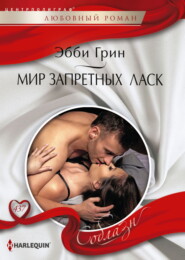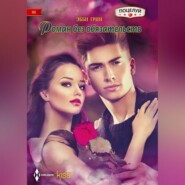По всем вопросам обращайтесь на: info@litportal.ru
(©) 2003-2025.
✖
Summer Sheikhs: Sheikh's Betrayal / Breaking the Sheikh's Rules / Innocent in the Sheikh's Harem
Автор
Год написания книги
2019
Настройки чтения
Размер шрифта
Высота строк
Поля
He turned his head and looked at her from under lowered eyelids. ‘Hot. Sweet.’ Like you.
The thought of what those long, strong fingers, his tongue and mouth had done to her last night stormed through her. Her neck was suddenly too weak to hold up her head.
She took a hasty mouthful of the yoghurt and shivered as a blast of sourness reached her nerves. ‘I give in!’ she cried, reaching to tear off a bit of the pancake and dipping the end in a little pool of honey that had collected in the lower levels of its bubbly terrain.
‘Delicious! That’s so yummy it should be classed as a dangerous weapon! Is every meal over the next few days going to be diet sabotage?’
‘Boiled camel feet sometimes lack that certain something,’ he advised. ‘Eat while you can.’
‘Between the suntan and the fat, my agent will kill me.’
‘Start a fashion for voluptuous,’ he suggested.
‘You don’t understand. I am voluptuous. I abandoned the waif figure years ago. Do you think this body is size zero? Think again.’
‘What is size zero?’
‘That’s the size models try to be. I’d have to lose ten or twelve pounds to get there. As a model I’m considered borderline fat, as my agent keeps warning me.’
Salah stared at her for a moment, then began to laugh. It started as a chuckle, but quickly descended to his belly, where it took on a deeply contagious quality that drew her irresistibly into laughter, too. With great gusts and hoops, they were caught so helplessly that finally Salah fell backwards into the sand.
She turned to look down at him, at the black curls dusted with sand, sun-crinkled eyes, white teeth and laughing mouth. A new expression came into his eyes, and the laughter died on her lips.
He lifted his hand up her back and clenched it in her hair.
‘You are perfectly beautiful,’ he said, and for an uncharted time they were still, gazing at each other through ten long, wasted years.
Then Salah’s eyes widened in something like alarm. His face became shuttered and he sat up.
‘It is time to leave,’ he said flatly. And only then did Desi breathe again.
As he had predicted, several of the older women were sitting near the camel corral as they left, with their crafts and other wares spread out for examination.
Desi crouched down in front of the spread. Dolls made of bits of cloth and coloured thread, stones with fossils embedded in them, some pottery bowls with a curious design, and, best of all, some beautifully etched and painted bits of camel bone.
Desi oohed and aahed over everything, miming her admiration, and, unable to disappoint such dignified, open people, who clearly were very poor, carefully chose several items.
The camel bone work was exquisite: carved and engraved rings and pendants, and little etched scenes on flat strips of bone that looked for all the world like ivory.
Desi picked up an oval medallion bearing a delicately etched camel. Brown paint had been rubbed into the etched lines, so the outlines were dark against a smudged paler background blending into the creamy white of the bone.
‘This stuff is gorgeous!’ she said over her shoulder to Salah. ‘Where did she learn to carve like this?’
Salah briefly spoke with the artist, a middle-aged and weather-beaten woman with a thin face and calloused, graceful hands.
‘She learned it from her father. He learned it from his own father, and as none of her brothers survived childhood, he taught her. Her father used to colour such etchings in many colours, but she can no longer find the substances to make the paints, so she paints mostly in monochrome. She misses having the colours and apologizes because the work is not very pretty.’
‘It’s lovely. Can you find out her name for me, please?’
As Desi drew out her wallet, one of the women signalled to her, then opened a bit of cloth to show her something.
A small clay statue of a woman with a large tiara and hair exquisitely moulded in tumbling curls down her back and over her shoulder. She had prominent breasts, and her pubic hair was clearly marked, but her body had been given a dress of paler clay that flaked easily when she picked it up.
Desi examined it curiously.
‘How old is this?’ she asked.
‘“Very, very old”,’ Salah translated for the women.
‘Do you think that’s true? I mean, if so, wouldn’t it be in a museum?’
‘It is unlikely that anyone in this tribe would make a forgery of that kind. They would consider it blasphemous. That is why they have given her a modest cover-up before selling her.’
Forgery or not, Desi was taken by the little figure.
‘How much is it?’
Again a short colloquy. ‘Twenty dirhams.’
Desi blinked. ‘But it must—it has to be a forgery. If it were genuine they’d be asking a lot more, wouldn’t they?’
‘They find such things in the sand as they travel. They used to destroy them, thinking them some sort of witchcraft. Then they learned that foreigners liked them. For them, twenty dirhams is a lot of money, especially for a found item. They don’t understand why tourists like things that are old and broken like this.’
‘Well, I certainly like her.’
When she had paid and everything had been wrapped in rags or bits of old newspaper and put in a very distressed plastic bag, she thanked the women and got to her feet. With many goodbyes they were on their way.
‘Where do they spend the money?’ she asked later, as they headed out over the desert.
‘Taxis sometimes come and take them to town.’
‘What, such a distance?’
He flicked her a look. ‘They are not always camped so far from civilisation. But mostly they buy from the travelling shops—trucks loaded with every kind of merchandise, which service the nomad communities.’
‘But no chance for that artist to buy manufactured paints?’
‘Probably not.’
‘If I found her some paints, would there be a way to send them to her?’
After a short silence, Salah asked, ‘Why do you bother with this?’
‘Because she’s an artist, and art this good has a right to the proper materials. Are you going to answer my question?’
‘If you sent her something, eventually it would find its way to her. Tell me, when did you develop an interest in the indigenous art and antiquities of Barakat?’
‘I do a lot of travelling in my job, Salah. Half the time I don’t get to see anything more than the inside of my five-star hotel and the shoot site. It’s not the art so much as the people. I rarely get to meet real people in a real environment. Those women are lovely people, so friendly, and they look as though they can use the money.’

















